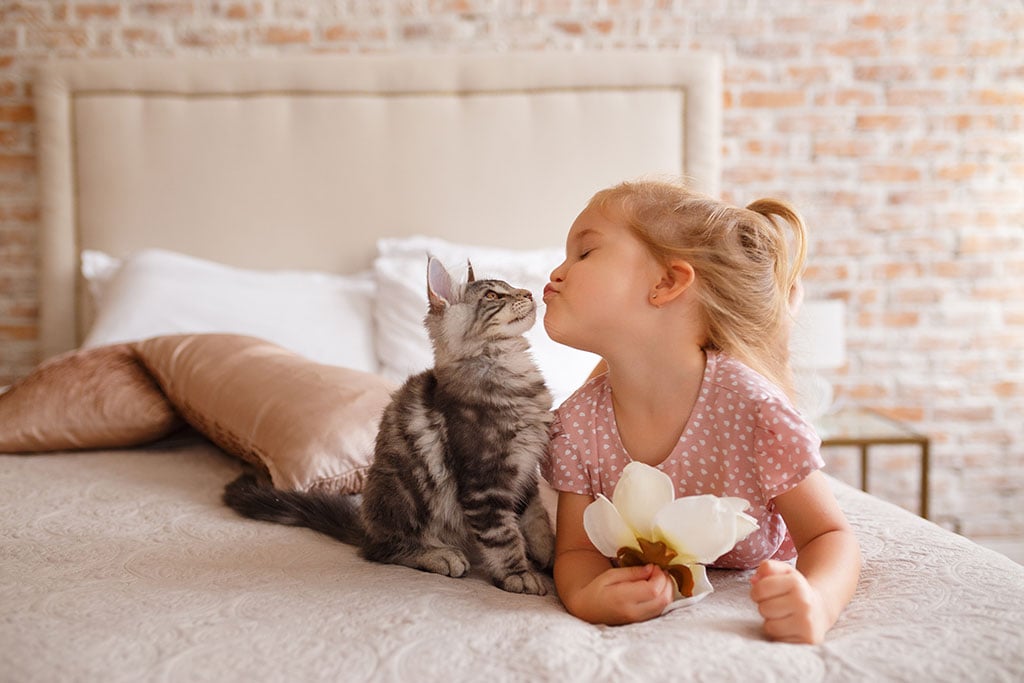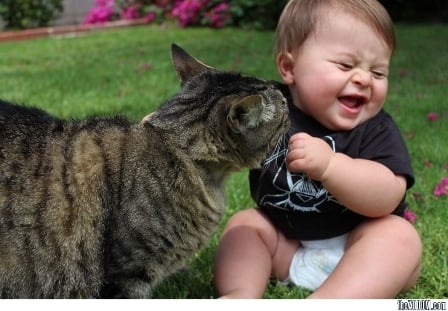Introduction
Bringing a new member into the family is always an exciting time, but what happens when you already have a furry friend? Cats and children can form a beautiful bond, providing countless benefits for both parties involved. However, it’s crucial to ensure their safety and establish respectful boundaries. In this listicle, we’ll explore the benefits of having cats and children living together and discuss important safety rules to follow.

1. Building Empathy and Responsibility
Growing up with cats can instill important values in children, such as empathy and responsibility. By caring for their feline companions, kids learn to understand and respond to the needs of others, fostering a sense of compassion and nurturing.
Encourage your child to participate in daily cat care activities, such as feeding, grooming, or even playing games together.
Teach them about the importance of treating animals with kindness and respect to develop empathy.
2. Emotional Support

Cats have an innate ability to provide emotional support, and this can be particularly beneficial for children. Having a furry friend to cuddle with when feeling sad or anxious can create a sense of comfort and security.
Ensure your child knows that they can turn to their cat for emotional support. Encourage them to talk about their feelings openly.
Discuss the concept of boundaries, stressing the importance of giving the cat space when needed.
3. Developing Social Skills
Cats can help children improve their social skills in various ways. When playing and interacting with their feline companions, kids learn valuable lessons about communication and understanding non-verbal cues.
Encourage your child to engage in interactive play with the cat, using toys or simple games of hide-and-seek.
Explain to them that just like people, cats have their own limits and signals. Teach them how to interpret feline body language to promote healthy interactions.

4. Teaching Respect and Boundaries
Respect for animals and establishing boundaries are crucial when it comes to cats and children living together. Educating your child about these aspects lays the foundation for a harmonious coexistence.
Teach your child to approach the cat calmly and gently, avoiding sudden movements that may startle or frighten them.
Emphasize that a cat’s personal space should be respected, especially when they retreat to a specific area or show signs of wanting alone time.
5. Instilling Hygiene Practices
While cats are generally clean animals, it’s important to teach children proper hygiene practices to minimize potential health risks.
Teach your child to wash their hands after handling the cat or cleaning their litter box to prevent the spread of bacteria.
Ensure your child understands the importance of regular grooming for the cat, including brushing to maintain a healthy coat.

Conclusion
Having cats and children living together can be a rewarding experience, offering numerous benefits for both parties. It’s essential to promote a safe and respectful environment while educating children about responsible pet ownership. By following these safety rules and nurturing the bond between cats and children, you can create a lifelong companionship filled with love, joy, and unfo
